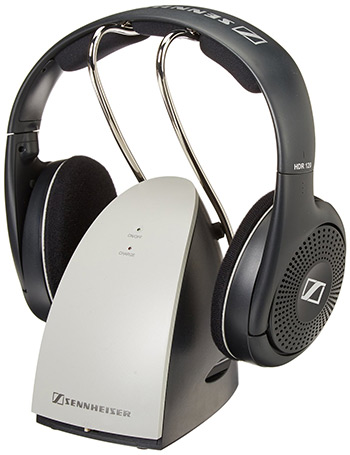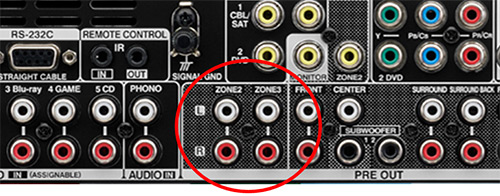Question:
Dear BPBS,
I see that there a lot of Bluetooth headphones on the market today. My Onkyo receiver has a Bluetooth adapter. Does this mean I can use Bluetooth headphones with my Onkyo receiver so I can watch movies at night without waking up the family? I'd also sometimes like to listen to TV programs while they might want to listen to music or something else. I tried a Bluetooth headset but I wasn't able to get it to pair with the receiver.
Thanks,
-Clifford
Answer:
Hi, Clifford,
I've seen this issue come up a few times lately. The short answer is, "No" but in case you're wondering why, or looking for alternatives, read on.
Many of today's A/V receivers have built-in Bluetooth or an optional Bluetooth streaming adapter. We've seen models from Onkyo, Yamaha, Denon, Integra, Sony, Marantz and others with this feature. When you see that a home theater receiver has Bluetooth, you might expect that it would work with Bluetooth headphones but that's usually not the case. The Bluetooth feature built into most A/V receivers (or Bluetooth adapters) is to allow a portable device such as a phone or tablet to stream music to that receiver. This way you can listen to your digital music or streaming apps like Pandora or Spotify from your phone through your main speaker system.

If you're trying to connect a pair of headphones to your A/V receiver wirelessly, we'd recommend a standard pair of RF (Radio Frequency) wireless headphones instead. The Sennheiser RS120 are one example of this type of wireless headphone that we've used extensively, but there are many other options. RF-based wireless headphones typically have a pair of RCA jacks as input. Sometimes they'll have a standard 3.5mm (1/8") headphone jack instead. In either case, you can connect the receiver's headphone out jack to the wireless headphone transmitter and that will transmit sound to the wireless headphones.
The only drawback to this approach is that plugging anything into the receiver's headphone output jack will usually mute the speakers. So if you want to listen to headphones while still allowing others around you to hear the same material or something different, then you'll need to connect the headphones a little differently.
Most A/V receivers still have an analog tape loop (tape in/out) as one of the inputs. The "tape out" or "record out" jack gets sound from whatever device is selected on the receiver. So if you connect your wireless headphone transmitter to the "tape out" jack, you should be able to listen to whatever source is selected on the receiver. If you want to listen to a source that is different from what is playing on the main speakers, then check to see if your receiver has a "Zone 2" output which is not in use. Zone 2 is normally designed for multi-room speaker systems, but you can also use it to drive a pair of wireless headphones. With this approach, you can select what you listen to on the headphones independently from the main system: you can listen to the same source or select any other connected source.

The only caveat here is that on some receivers the only sound sent to the tape out or zone 2 output is from devices connected to the receiver using analog RCA cables. Devices connected via HDMI cables might not be converted to analog for the tape out or zone 2 jacks. If that's the case then you can always connect these devices (e.g., Blu-ray player, DVD player, TV or cable box) to an unused analog input on your receiver and select that for your Zone 2 output.
By the way, you can pick up the Sennerheiser RS120 on Amazon so check out this and other wireless headphone options here.
Aw, But I Really Want to use Bluetooth Headphones!
If you really want your current receiver (or TV for that matter) to work with Bluetooth headphones or even Bluetooth speakers, you can add on a device called a Bluetooth transmitter. This hooks up exactly the same way as the Sennheiser wireless headphones described above (to a headphone jack or tape or zone 2 output on your receiver). It then converts the audio to Bluetooth to connect with a Bluetooth headset or speaker.
If TV shows or movies will be among the content your use with the Bluetooth headphones then be sure to get a Bluetooth transmitter with low latency. This will prevent the audio/video sync problems that can occur with Bluetooth devices.
Here are a couple of options for low latency Bluetooth transmitters that you can add to a TV or A/V receiver. The Avantree Priva III transmitter supports two pairs of headphones at a time so two people can listen in privacy :
The newer Avantree TC417 Bluetooth transmitter includes a fiberoptic input so it's a great choice to plug directly into a TV as most modern TVs have fiberoptic digital outputs.
Both units also include analog inputs so they can be connected to any device with a headphone output. And both are highly rated by Amazon customers.
Hope this helps!